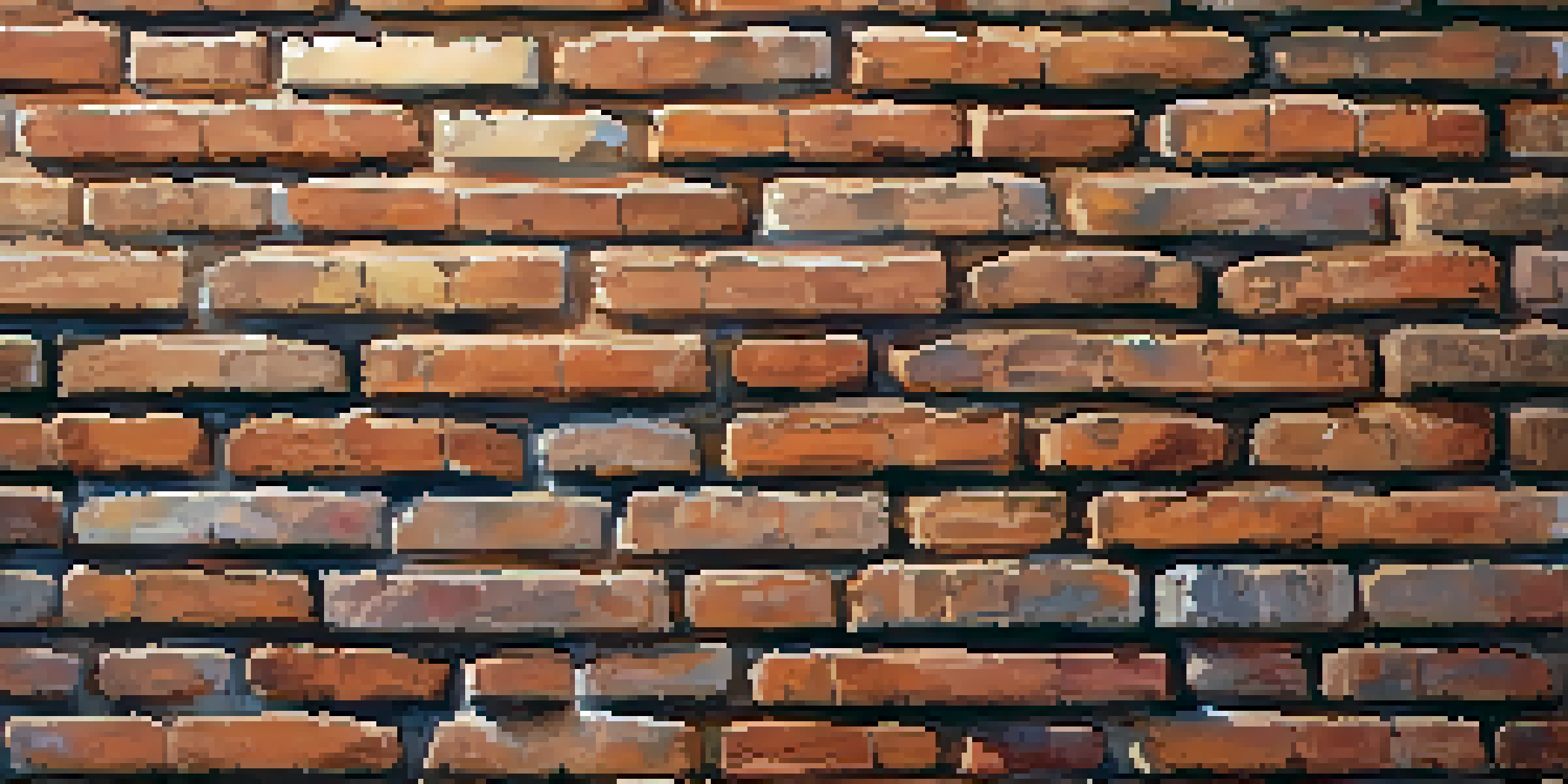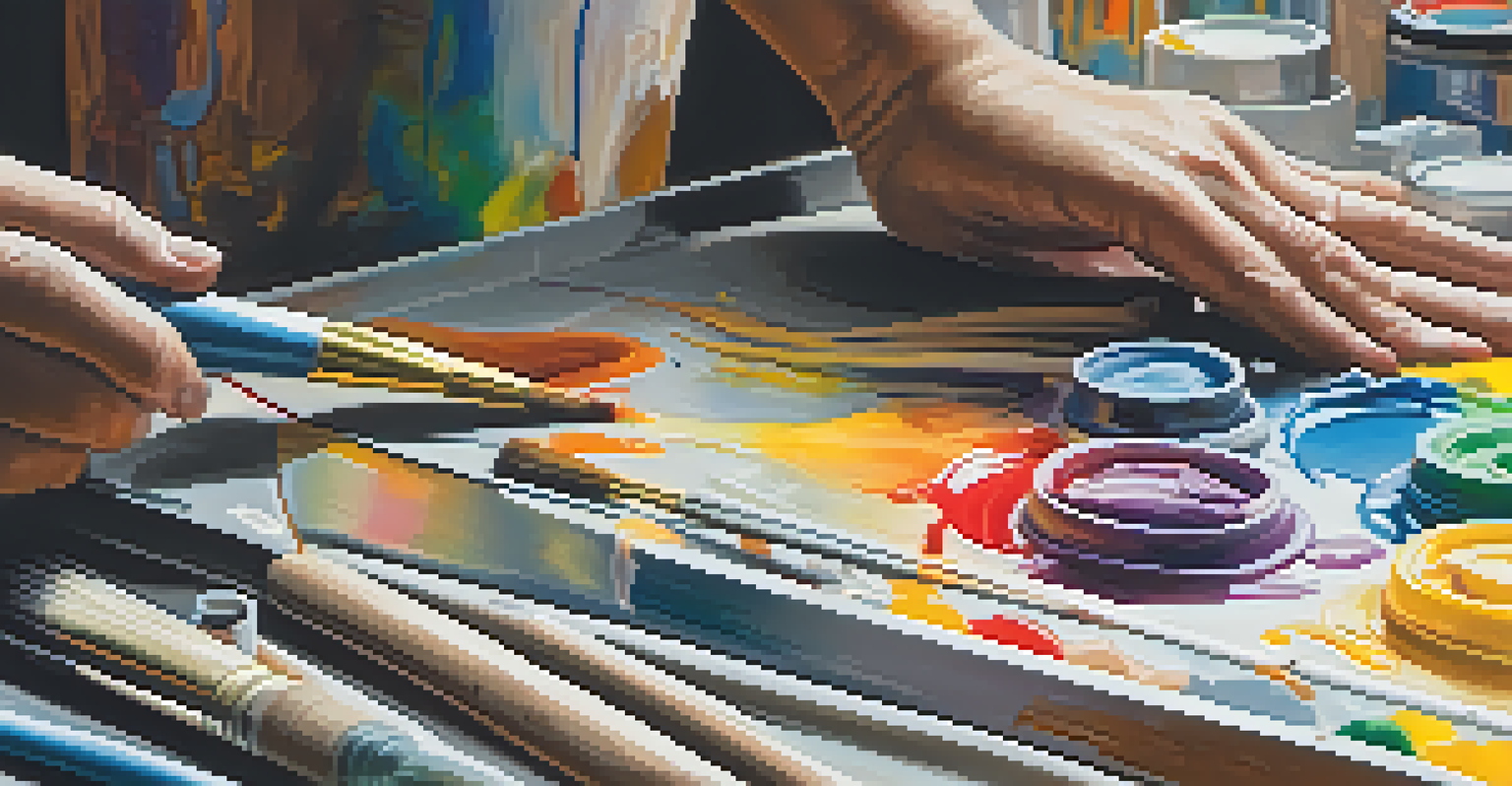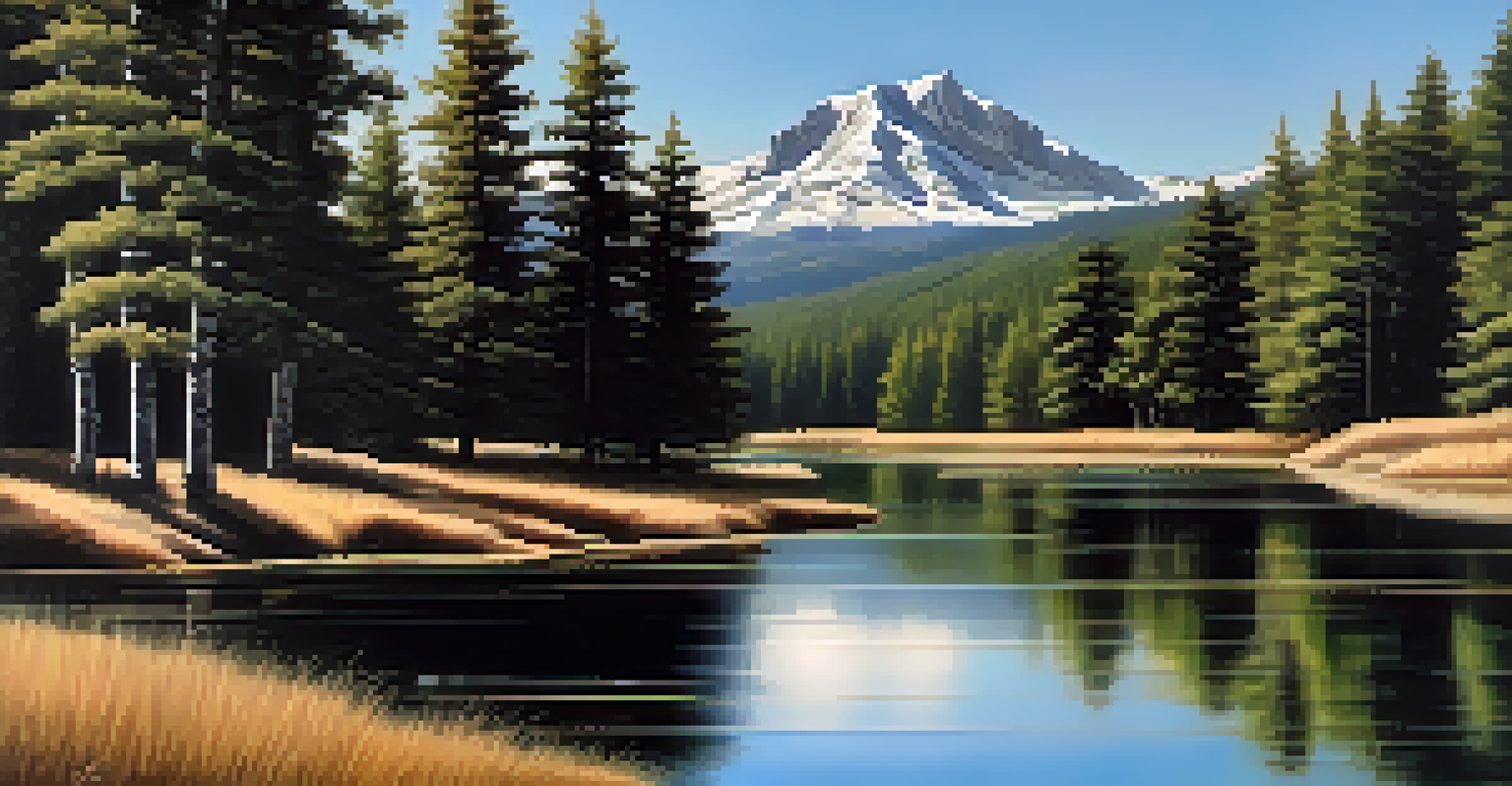The Role of Texture in Art: Engaging the Senses Visually

Understanding Texture: More Than Just a Surface
Texture in art refers to how a surface feels or appears to feel. It's not just about the physical texture of materials, but also the visual texture created by the artist. Think of how a painting of a rough tree bark can evoke the sensation of touching it, even though it's just paint on canvas.
Texture is not just a visual element; it's a significant part of cultural identity and expression.
Artists use various techniques, such as brush strokes or layering materials, to create this illusion. For instance, an artist might use thick paint to give the impression of a three-dimensional surface. This ability to convey texture visually allows viewers to engage with the artwork on a deeper level.
Thus, texture becomes a bridge between the viewer and the artwork, inviting them to not only look but to feel. This interaction enriches the overall experience, making it memorable and impactful.
The Types of Texture: Visual vs. Tactile
When we talk about texture in art, we generally refer to two types: visual and tactile. Visual texture is an illusion created through artistic techniques, while tactile texture is the actual feel of the material used. For instance, a sculpture made from stone has a tactile texture that we can physically touch, while a painting may depict a furry animal without any real fur.

Artists often play with these two types of texture to create a layered experience. They might choose a smooth canvas for a painting that visually suggests roughness, compelling viewers to imagine the sensation. This interplay keeps the viewer's mind active, pondering the contrasts and connections.
Texture Bridges Art and Emotion
Texture in art enhances emotional engagement, inviting viewers to connect more deeply with the artwork.
Understanding the difference between visual and tactile texture enhances our appreciation of art. It invites us to explore how artists manipulate materials and techniques to engage our senses in exciting ways.
The Emotional Impact of Texture in Art
Texture can evoke powerful emotions, influencing how we perceive an artwork. A rough, jagged texture might elicit feelings of chaos or tension, while smooth, flowing lines can create a sense of calm and serenity. This emotional resonance is a crucial aspect of why texture matters in art.
Art is the most beautiful of all lies; it is a mixture of truth and illusion.
For example, consider a painting depicting a stormy sea with turbulent waves. The artist's rough brushstrokes can evoke feelings of unease and energy, pulling the viewer into the scene. In contrast, a serene landscape with soft textures can bring about feelings of peace and reflection.
By engaging with these textures, viewers connect emotionally with the artwork, making it more than just a visual experience. This emotional layer adds depth, encouraging individuals to reflect on their own feelings and experiences.
Texture in Different Art Forms: A Diverse Approach
Texture is not limited to paintings; it spans across various art forms, including sculpture, photography, and textiles. In sculpture, artists often emphasize tactile textures to invite touch and interaction, enhancing the viewer's experience. A beautifully carved wooden figure, for instance, invites the viewer to explore its smoothness and intricacies.
In photography, texture can be highlighted through lighting and focus, drawing attention to the details of surfaces. A close-up shot of an old brick wall can reveal the story behind its weathered texture, adding character to the image. This interplay of texture and light creates visual interest that can captivate the audience.
Visual vs. Tactile Texture Explained
Understanding the difference between visual and tactile textures enriches our appreciation of artistic techniques.
Textiles also play a significant role in the world of texture. Artists and designers use different fabrics to evoke feelings and meanings, whether it's the softness of silk or the roughness of burlap. Each choice contributes to the overall narrative, showcasing the versatility of texture across various mediums.
Texture and Its Cultural Significance in Art
Different cultures have unique approaches to texture in their art, revealing much about their values and beliefs. For instance, traditional Japanese ink paintings often emphasize simplicity and subtlety, using texture to convey tranquility and nature's beauty. This aesthetic reflects a deep appreciation for harmony and balance.
Conversely, many African art forms celebrate vibrant textures and patterns, which are often linked to storytelling and community. The intricate beadwork or textile designs can convey history, identity, and cultural significance. This richness adds layers of meaning that resonate with viewers on a personal level.
Examining texture through a cultural lens allows us to appreciate the diverse ways artists express their heritage. It emphasizes that texture is not just a visual element but a significant part of cultural identity and expression.
The Role of Texture in Modern and Contemporary Art
In modern and contemporary art, texture has taken on new dimensions, often challenging traditional concepts. Artists experiment with unconventional materials, creating mixed-media works that engage the senses in innovative ways. For instance, using recycled materials to create a textured collage can provoke thought about consumption and sustainability.
This artistic exploration invites viewers to interact physically and mentally with the artwork. The textures can provoke curiosity, prompting questions about the materials' origins and meanings. This dynamic relationship between the artwork and the audience encourages deeper engagement.
Cultural Significance of Texture
Texture reflects cultural values and identities, revealing deeper meanings in various art forms.
Moreover, contemporary artists often blur the lines between visual and tactile textures, creating experiences that are immersive. By inviting viewers to touch or engage with the artwork, they redefine the boundaries of how we perceive and appreciate art in our modern world.
Conclusion: Celebrating Texture in the Artistic Journey
In conclusion, texture plays a vital role in art, engaging our senses and emotions while enriching our experience. Whether through visual illusions or tactile interactions, texture invites us into the artist's world, enabling us to connect more deeply with their message. It's a powerful tool that transcends mere aesthetics.
As we've explored, the significance of texture spans across various art forms and cultures, reminding us of its diverse applications. This exploration encourages us to appreciate not just what we see, but also how we feel when we engage with art. Each texture tells a story, adding layers to our understanding.

By celebrating texture in art, we embrace the sensory journey it offers. It encourages us to explore and reflect, reminding us that art is not just to be viewed but experienced fully.